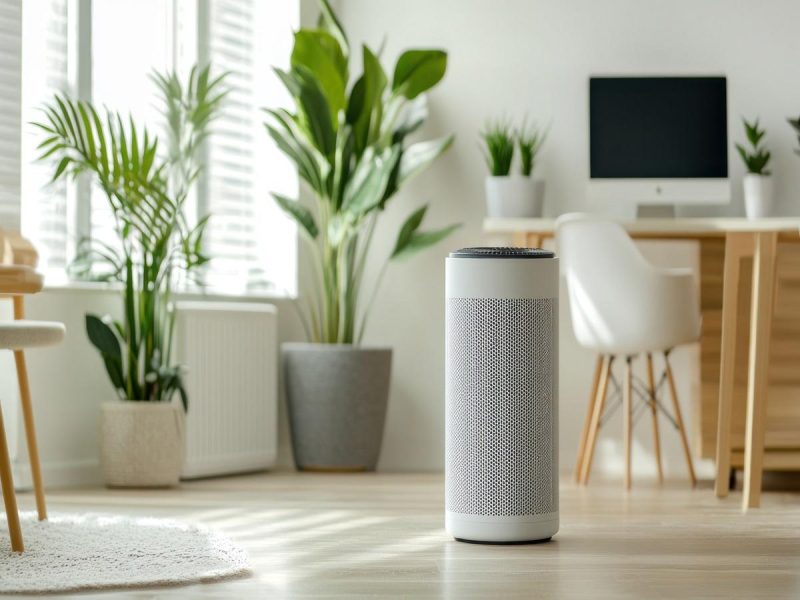WFH and travel paranoia during Covid-19 have lowered occupancy in these hotels, forcing them to offer alluring rates as low as Rs 5,000 a night with meals to leisure customers
The Connaught from brand SeleQtions of The Indian Hotels Company Ltd (IHCL) is in the middle of the Central Business District at Connaught Place and reflects Delhi’s cultural and linguistic melting pot
Time was when it was par for the course for a top-notch five-star hotel in the heart of the city to charge anything like 10,000-20,000 a night. Would you believe you can stay in some of the best brands in the city’s prime central business districts for Rs 3,500-5,000 a night, with a few meals thrown in?
The travel and tourism, and hospitality industries were the first, the worst and the longest-affected due to the pandemic, says Piyush Tiwari, Director Commercial & Marketing, ITDC (India Tourism Development Corporation), a group which runs Ashoka and Samrat, among others. He adds, “To reach pre-pandemic levels, we might have to wait till early 2022 or 2023. The country has done its best in managing Covid-19 and the sentiment will only improve with more vaccines as we inoculate 1.3 billion Indians. This will bring back some confidence.”
Leisure versus business
There is a clear dichotomy between leisure and business hotels, with the former running out of rooms while the latter seeing low-occupancy rates. Tiwari from ITDC, which runs business hotels, says, “If I talk in terms of absolute numbers, I can say I have got 100 rooms booked in my hotel and that sounds very good. But if I say it’s out of 550 rooms, then you know the real picture. There is a price war and whoever says we will not lower the prices is not being realistic. Today my purpose is not to make money, but to survive.” But Ashoka group has also found an alternate revenue stream in leasing office space.
Demand is high for destination hotels and leisure properties. ITC, which has a portfolio of business-plus-leisure hotels, concede that it’s definitely the leisure market, not business, that is driving demand in its hotel chain. Says Anil Chadha, COO, ITC Hotels, “With a surge in domestic tourism, the leisure segment has picked up significantly in most locations. We have had high occupancies at ITC Mughal, Agra; ITC Rajputana, Jaipur and ITC Grand Goa, as well as hill Stations and celebration destinations. The recently launched Welcomhotel Shimla was a full house in the month of its opening.”
Ditto with InterContinental. Says Sudeep Jain, Managing Director, IHG (InterContinental Hotels Group), South West Asia, “Since the easing of Covid-19-related restrictions last year, demand has been primarily driven by leisure travellers who are looking for staycations or longer holidays at popular domestic destinations such as Goa, Jaipur, Agra, Chennai and NCR. With consumer confidence returning, occupancy across our hotels in India continues to improve and some of our properties recorded over 90 per cent occupancy by end of 2020.”
But in the business hotels domain, IHG has been exploring new revenue streams and has introduced co-working spaces, and new ways to lease out rooms with tailor-made sales solutions. These include IHG Business Edge, designed to enhance the corporate travel experience for small and mid-sized domestic enterprises. Business hotels are being lean and flexible in offering customised plans and wooing everyone from the individual guest to the institutional customer.
Says Jain, “Depending on individual or corporate requirements, our hotels are offering multiple customised packages which can include a room stay, use of meeting space, access to high-speed internet, business centre facilities, discount on F&B packages as well as in our outlets, gym access, free parking space and access to recreational facilities in the hotel.”
Today one can conveniently stay at a luxury business hotel in the city centre for under Rs 5,000 a night, with a few meals included. A top hotelier says it is actually Rs 4,000. He says, candidly, “I wish it were Rs 5,000 a night. If my customer pays me that much, I will be ready to include everything–breakfast, lunch and dinner.” And it isn’t just prices. Business hotels are warming up to kids and even pets, which were taboo in these hi-browed spaces earlier. Paucations and staycations are the latest trend in luxury business hotels with some having recently invested in kid-friendly activities such as mini golf and hobby classes.
“We’ve seen staycations emerging as a key trend in the industry,” says Arif Patel, Regional Vice President–Sales & Marketing, Hyatt India. “With people looking for short breaks to unwind and rejuvenate, our hotels have been recording similar occupancies during both weekdays and weekends. We expect young families to continue visiting our hotels and we have a set of curated experiences and packages for them such as cooking classes and activities for children to keep the guests engaged.”
Hyatt also has special packages for working professionals who come with families. Guests are encouraged to work from the hotel. Apart from the essential IT amenities, discounts on F&B and laundry services are available.
Pandemic positives
The pandemic has forced people to think out-of-the-box and address issues that weren’t paid heed to earlier. For instance, outdoors have been reclaimed. Recently Ashoka hotel took its restaurant The Oudh, known for flavourful shorbas, kababs, biryanis and kormas, outside to its lawns in a majestic candlelit setting.
Hotels have spent time and money upgrading the outdoors. Says Parag Sawhney, General Manager at The Westin Hyderabad Mindspace, “We have beautified our lawns, polished our woods, brought speakers outside, added a lot more lighting and artefacts. My outdoor spaces were never as valued as they are today. We spent money and improvised on outdoor seating. People want to sit out a lot more and away from one another.”
Service dynamics have changed. Applying QR code menus, in-room dining orders and dial-a-chef are the new norms in food service. Says Puneet Chhatwal, MD & CEO, The Indian Hotels Company Limited (IHCL): “From now on, service in the hospitality sector will be less intrusive, and less of over-service. Gone are the days when someone would come to your room time and again for housekeeping.
The modern-day traveller values his privacy and service is mainly on a need basis.”
Food curation is undergoing a sea change with revival for local and hyperlocal flavours. ITC says its heritage recipes of Bohri biryani from Mumbai, Kodi pulao from Andhra Pradesh, and Nimona pulao from UP, were huge hits in its recent Biryani and Pulao festival. When it comes to food, less is more and its quality over quantity, says Chhatwal who says in India, thalinomics is difficult to replace, but top hotels won’t go for huge portions.
Servings are also in mono portions. Hoteliers say nobody wants to see a vast platter of fruits or a big jar of muesli. People prefer smaller servings and want their food covered. Portion sizes have been impacted and large servings have been replaced with smaller glass jars or reduced platters.
Food packaging has become critical. Many hotels have introduced corrugated boxes with every ingredient packed and labelled for customer convenience. Thus far, business hotels were not strong on deliveries but for the first time in history, they built up logistics infrastructure. “We never had those hot cases and deliveries used to go in bags and boxes,” says Westin’s Sawhney candidly. “But we realised that temperature plays a key role in keeping the food fresh and in the out-of-danger zone. So, we bought thermal bags which the Zomato and Swiggy guys use. For cold stuff, we have the required packaging-–a cold dessert like a souffle or mousse also goes at the right temperature. So now cold goes cold and hot goes hot. And it doesn’t matter whether our customer stays just 2 km away or 20 km away.” In fact, after shoring up their deliveries, the hotel could cater to the demand from one of its corporate customers, a top bank, which wanted to send boxes of Alphonso mangoes to 1,200 associates across India. Westin used this as an opportunity to keep the customer happy while making 46 per cent margin. After fine-tuning the delivery mechanism, it even created some premixed mocktails. Says Sawhney: “These were mocktails and not cocktails but if you wanted a Bloody Mary, all you had to do was add some vodka to it. We called it ‘Ghar Bar’.
Variety is the name of the game. No two brunches have been the same ever since the unlock happened. Hospitality experts say the guest should have a good reason beyond food to come back. Therefore, regaling the guest with events has become crucial. Musicians and stand-up comedians have been brought inside the foyer of business hotels to keep spirits high and the momentum going.
Pricing has been flexible and most business hotels like to keep it dynamic and offer a sort of differential pricing, much like the airline industry. Inclusions of meals, upgrade to the next category of room if available, offering a free spa or haircut has become the order of the day. If a family wants to bring along their dog, the hotels are assigning specific areas and even getting some rooms ready to be pet-friendly.
Let’s get phygital
One thing business hotels are coming to terms with is that there are fewer events and at a smaller scale. Says IHCL’s Puneet Chhatwal, “You don’t always have to meet people to do business. When we come out of the pandemic, the big trend will be phygital-–physical meetings may require just 50-100 people while the remaining 500 can be connected digitally via screens. Everyone doesn’t need to travel for meetings. And this will have a definite impact on business hotels. We will not have a 1,000- or 500-people convention as frequently as before and so, will not have so many rooms sold. However, the need to be away from home for a change, to drive, indulge in wellness and good food–all under one roof–will not go away. This will only speed up further once the pools, bars, the spas open up.”
The concern for cleanliness, hygiene, health, food and air quality, would remain paramount. Cleanliness has become the new amenity. Says Chadha of ITC Hotels: “Brands that prided themselves on locational advantage, now agree that cleanliness, instead, is the overriding parameter. Additionally, the new ‘normal’ has paved the way for all things digital. Brands now realise that they have to digitise every service and interaction to keep up with the world order.”
Hoteliers believe the minute occupancy hits 60 per cent, it will be business as usual for business hotels. Room tariffs are directly proportional to occupancy and as confidence levels rise with the introduction of the vaccine and stringent adherence to safety norms at hotels, and international travel begins, there will be a surge in demand. In the meantime, the customer can make hay while the sun shines.
Table: Indicative room tariffs in business hotels across India’s top-tier cities
| Hotel and location | City | Room Tariff (Rs) |
| Hyatt, MG Road | Bengaluru | 3,500 |
| ITC Gardenia, Bengaluru | Bengaluru | 4,500 |
| ITC Maratha | Mumbai | 4,000 |
| Trident Bandra Kurla | Mumbai | 4,000 |
| Taj Lands End | Mumbai | 5,800 |
| Renaissance, Powai | Mumbai | 5,015 |
| The Westin Hyderabad Mindspace, Hitec City, Madhapur | Hyderabad | 3,750 |
| Taj Deccan, Banjara Hills | Hyderabad | 3,700 |
| Holiday Inn, Delhi International Airport, | New Delhi | 2,634 |
| Eros Hotel, Nehru Place | New Delhi | 3,449 |
| The Ashok, Chanakyapuri | New Delhi | 3,999 |
| Shangri-La’s Eros Hotel, Ashoka Road, Connaught Place | New Delhi | 5,500 |
| ITC Maurya, Diplomatic Enclave, Sardar Patel Marg | New Delhi | 5,280 |
Credit: Room tariff at MakeMyTrip; indicative prices, may vary as per day of week, demand for rooms, special days, location, view, and other factors




